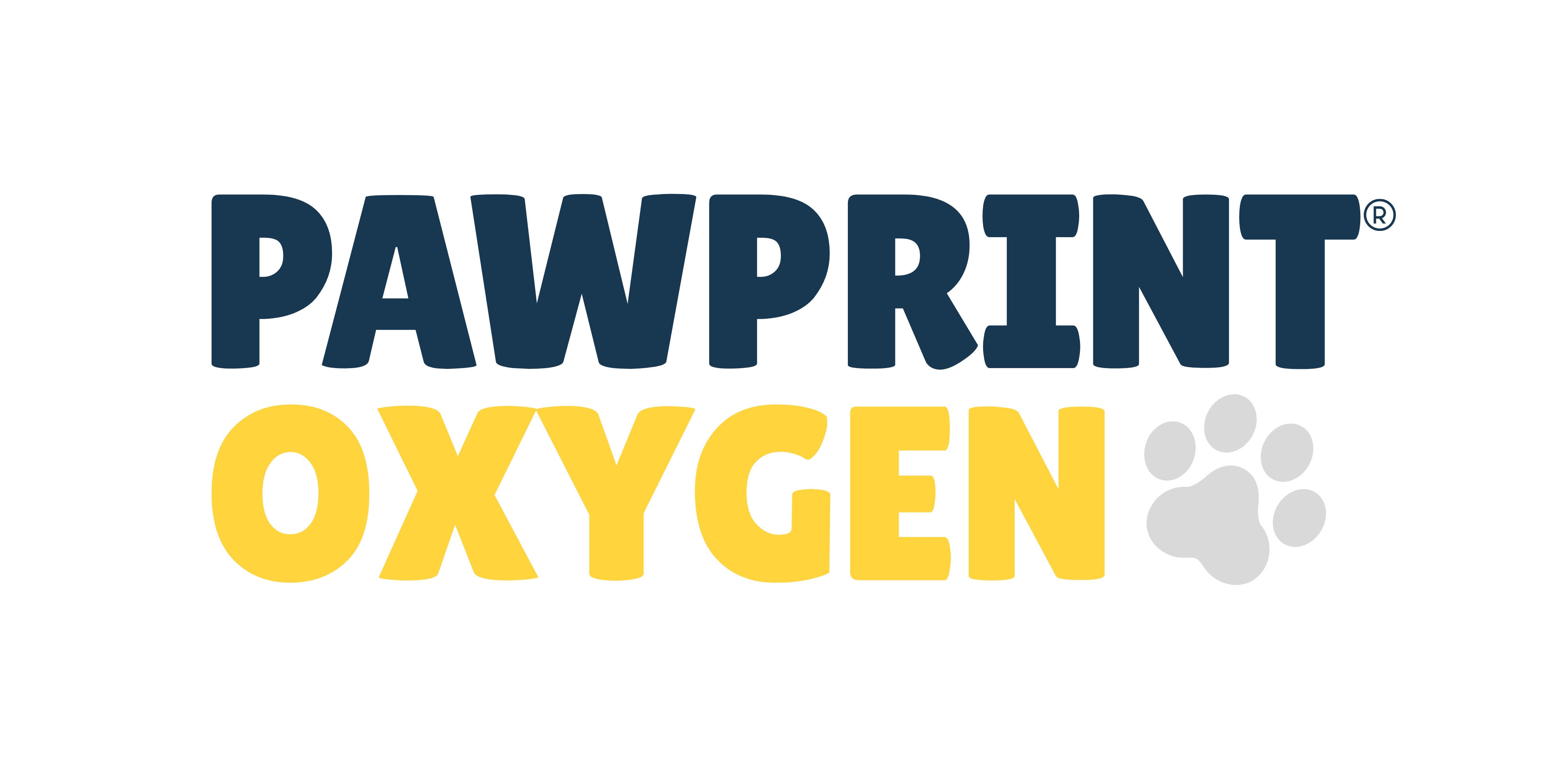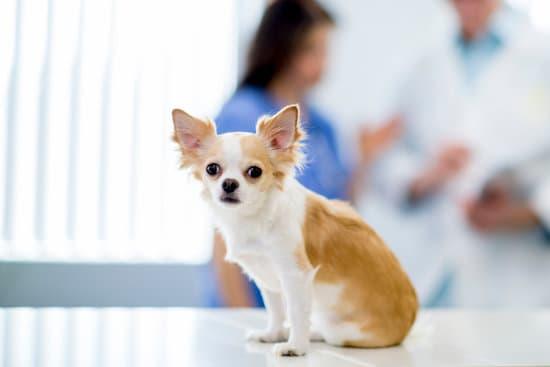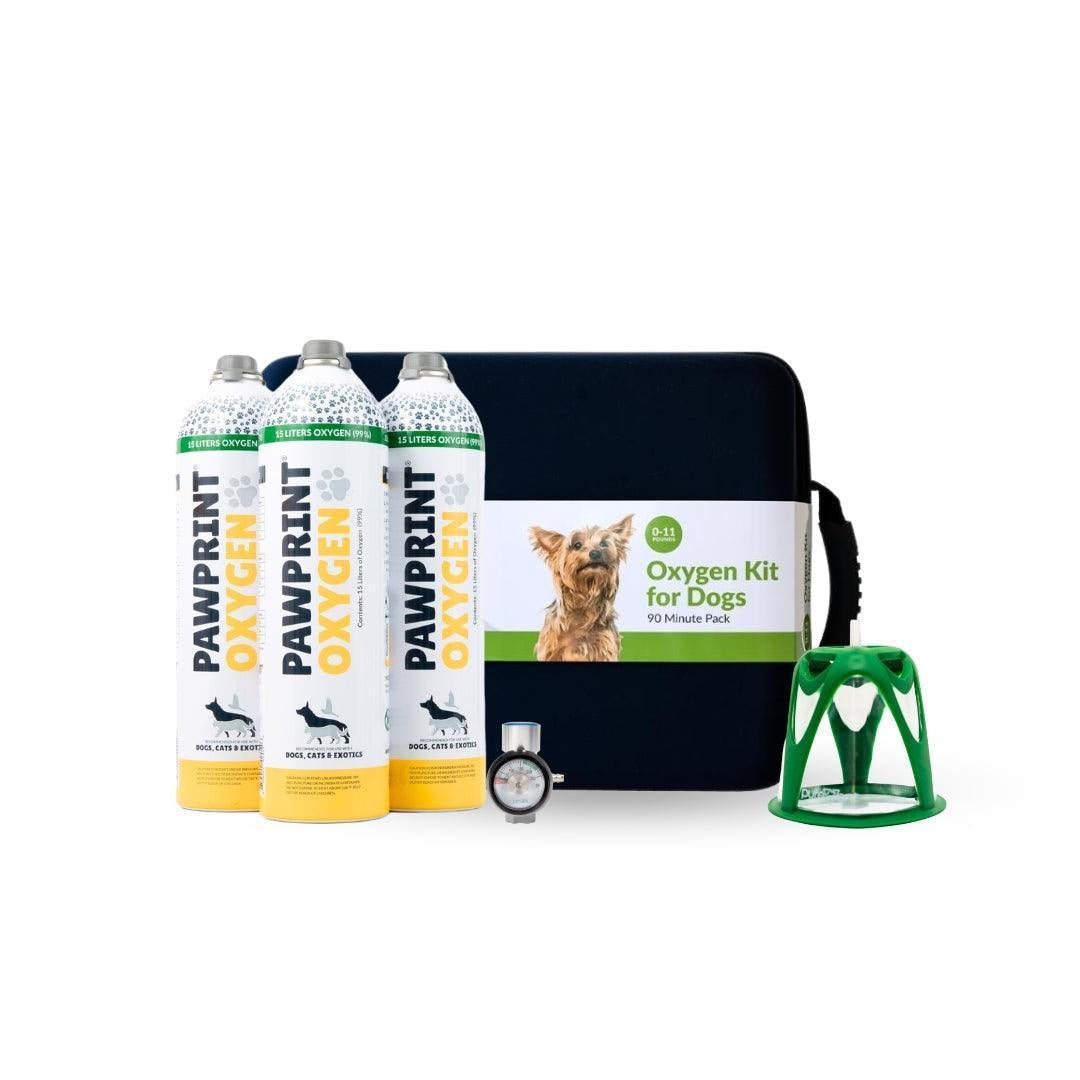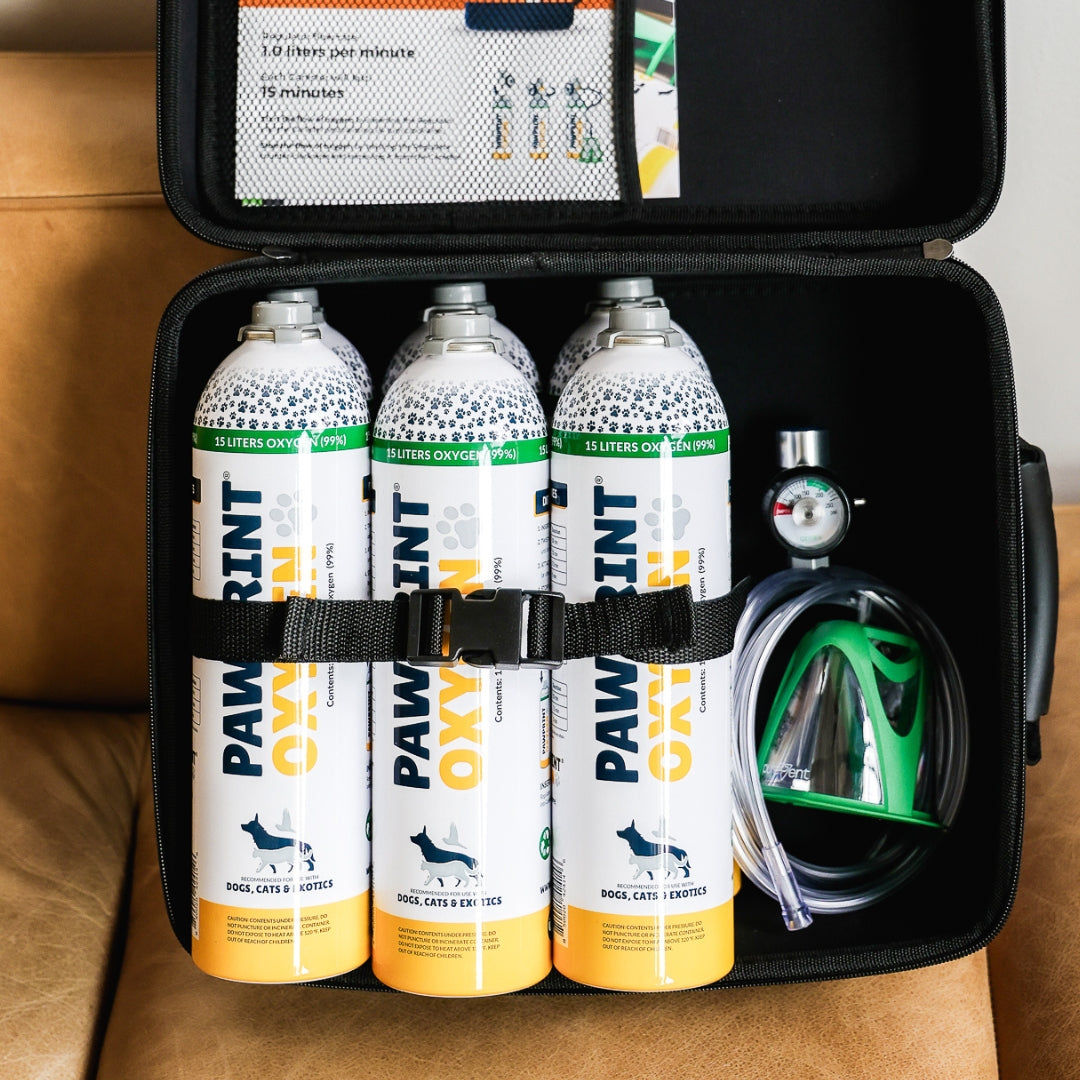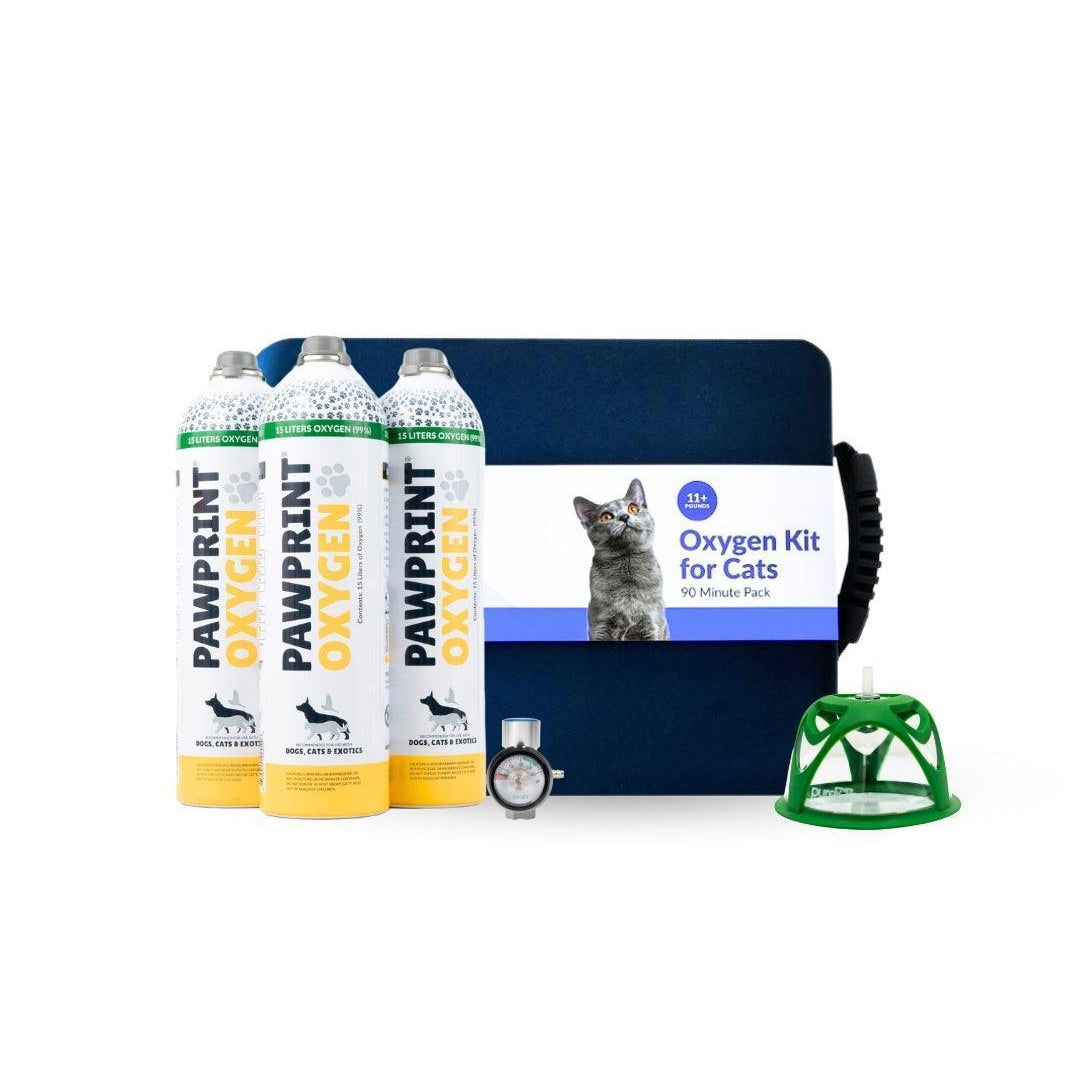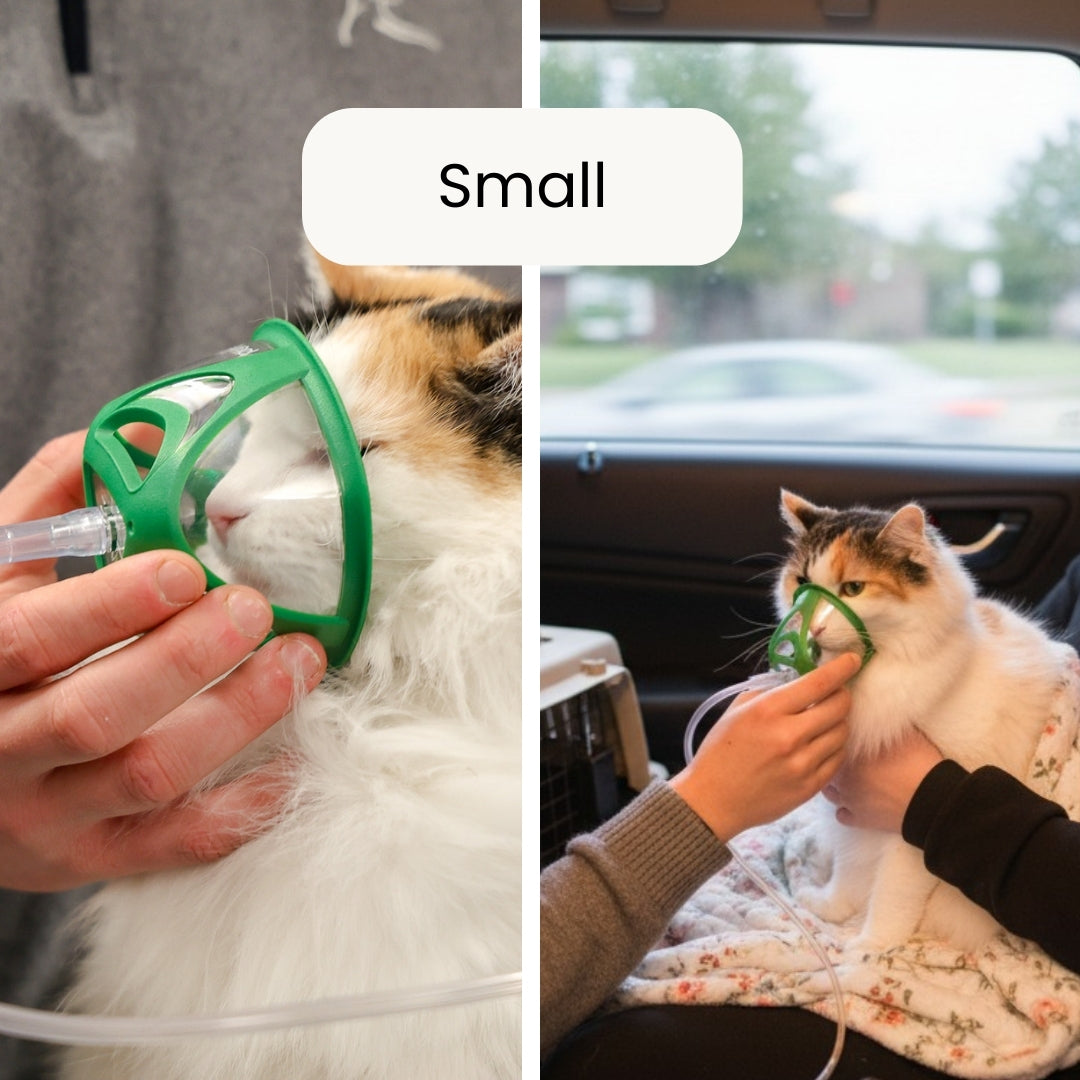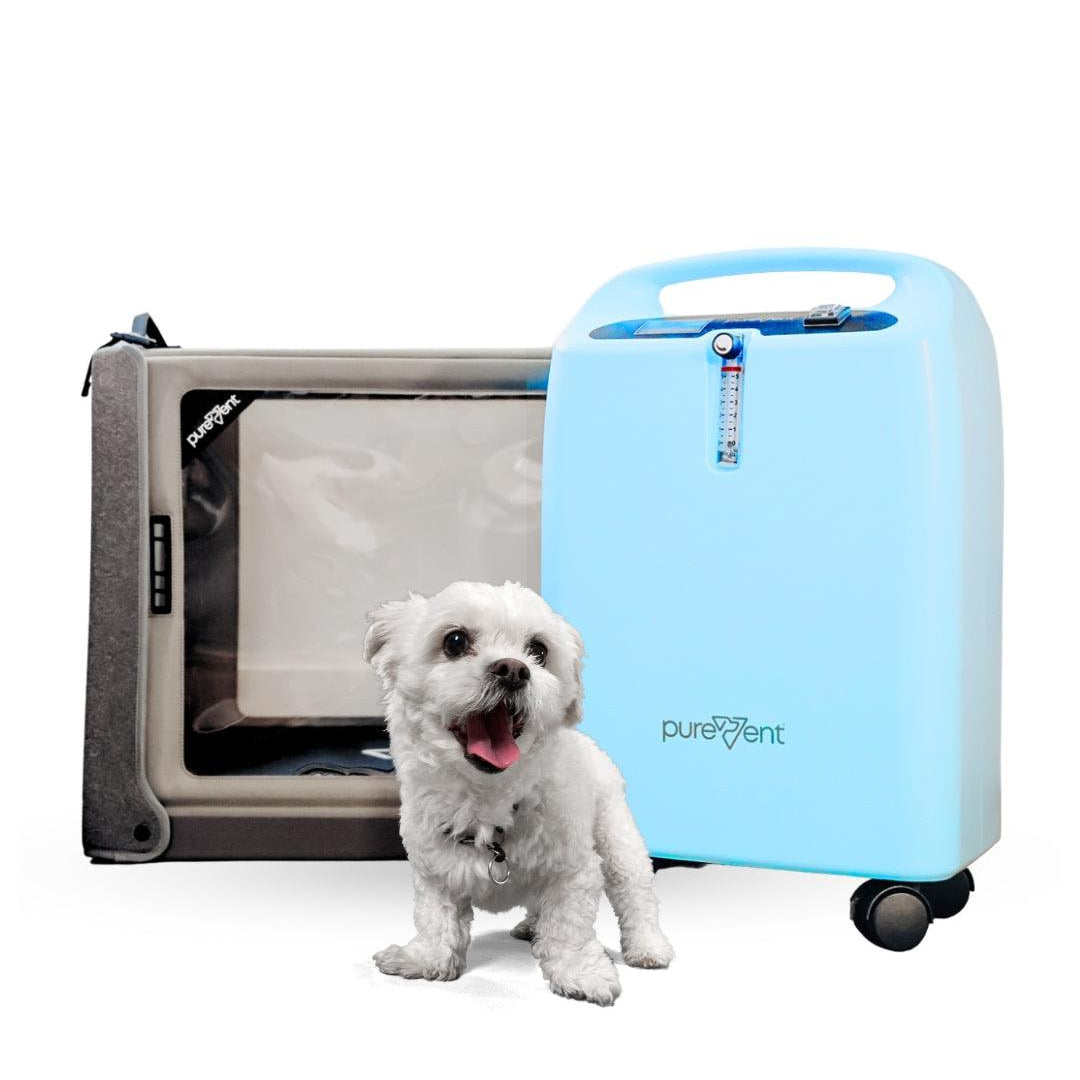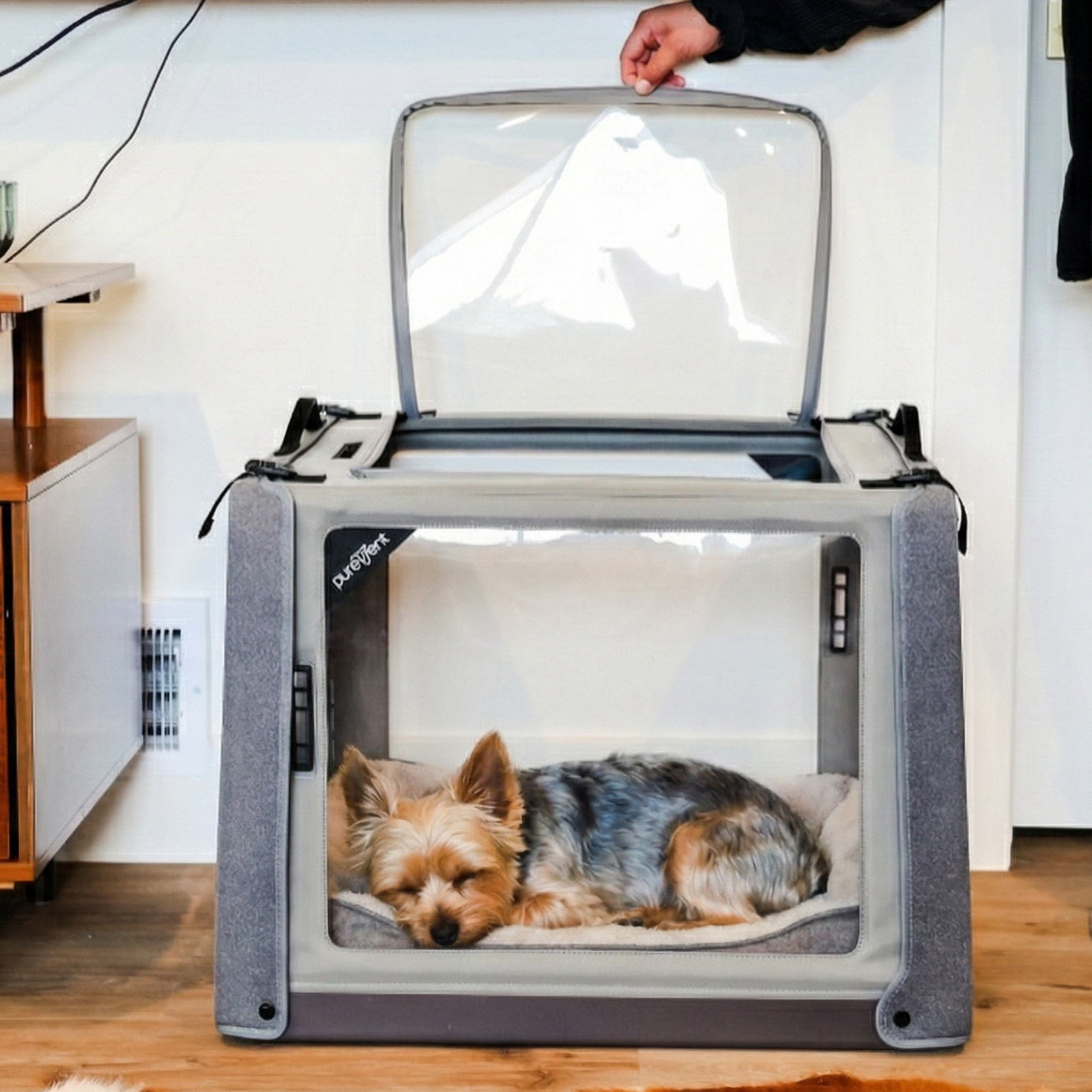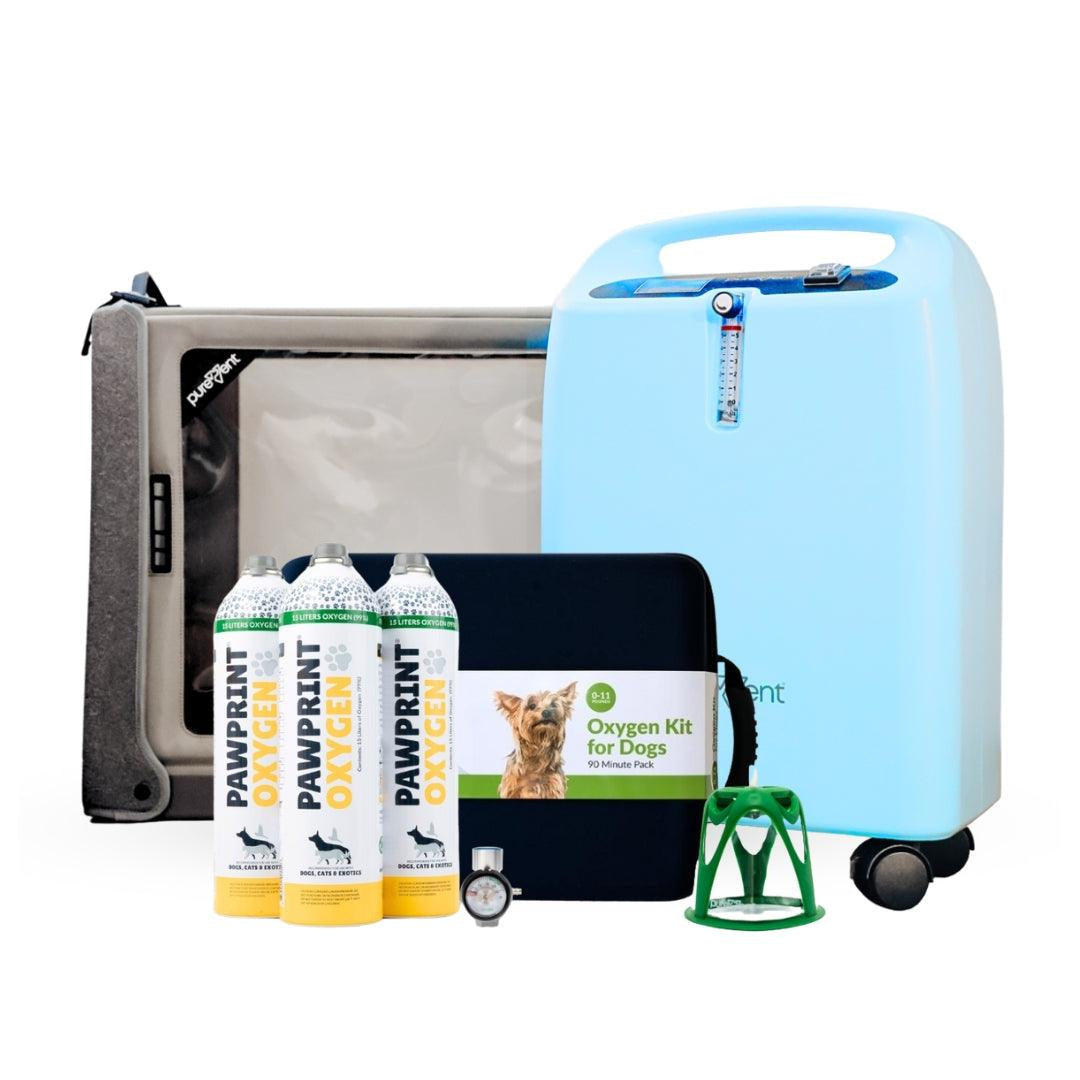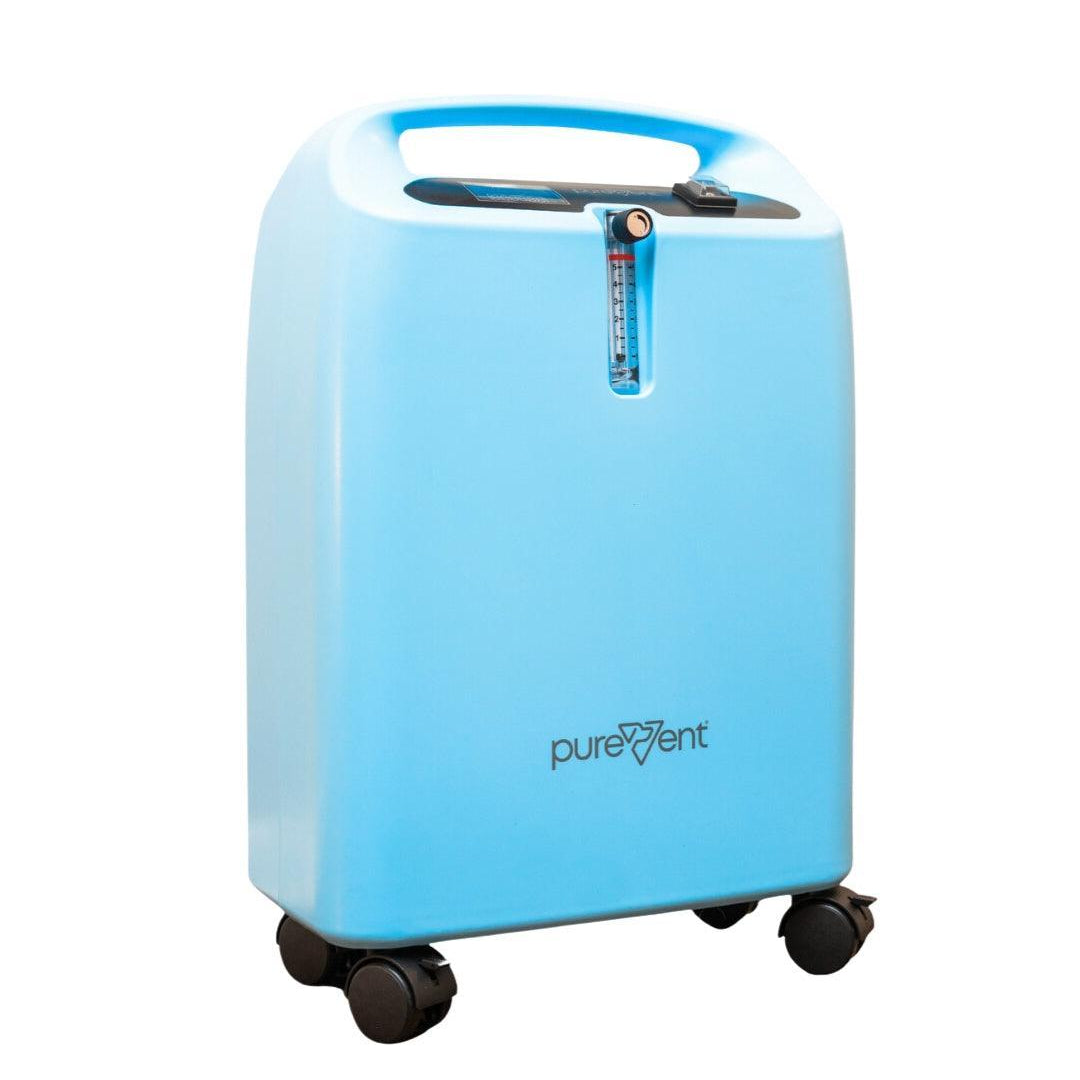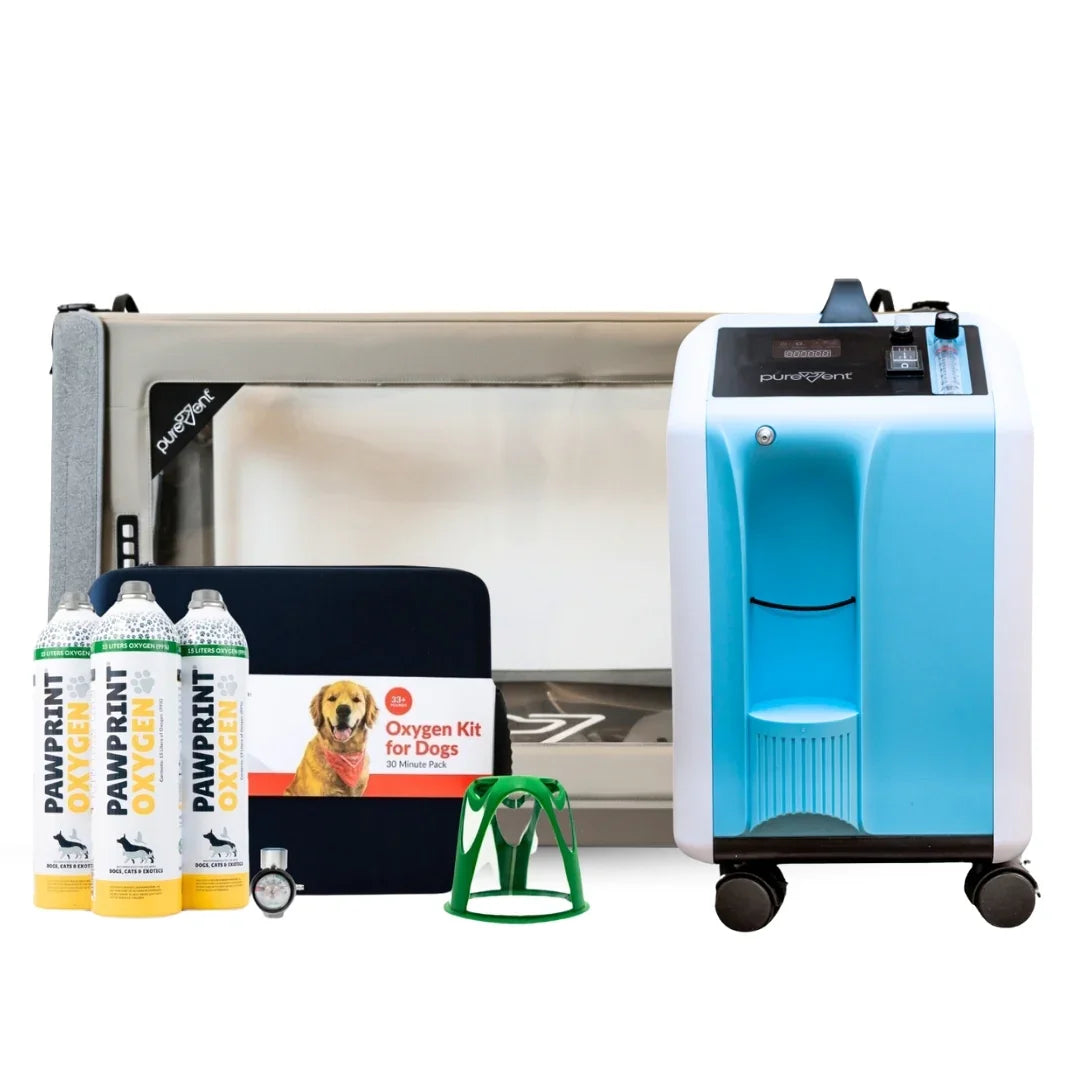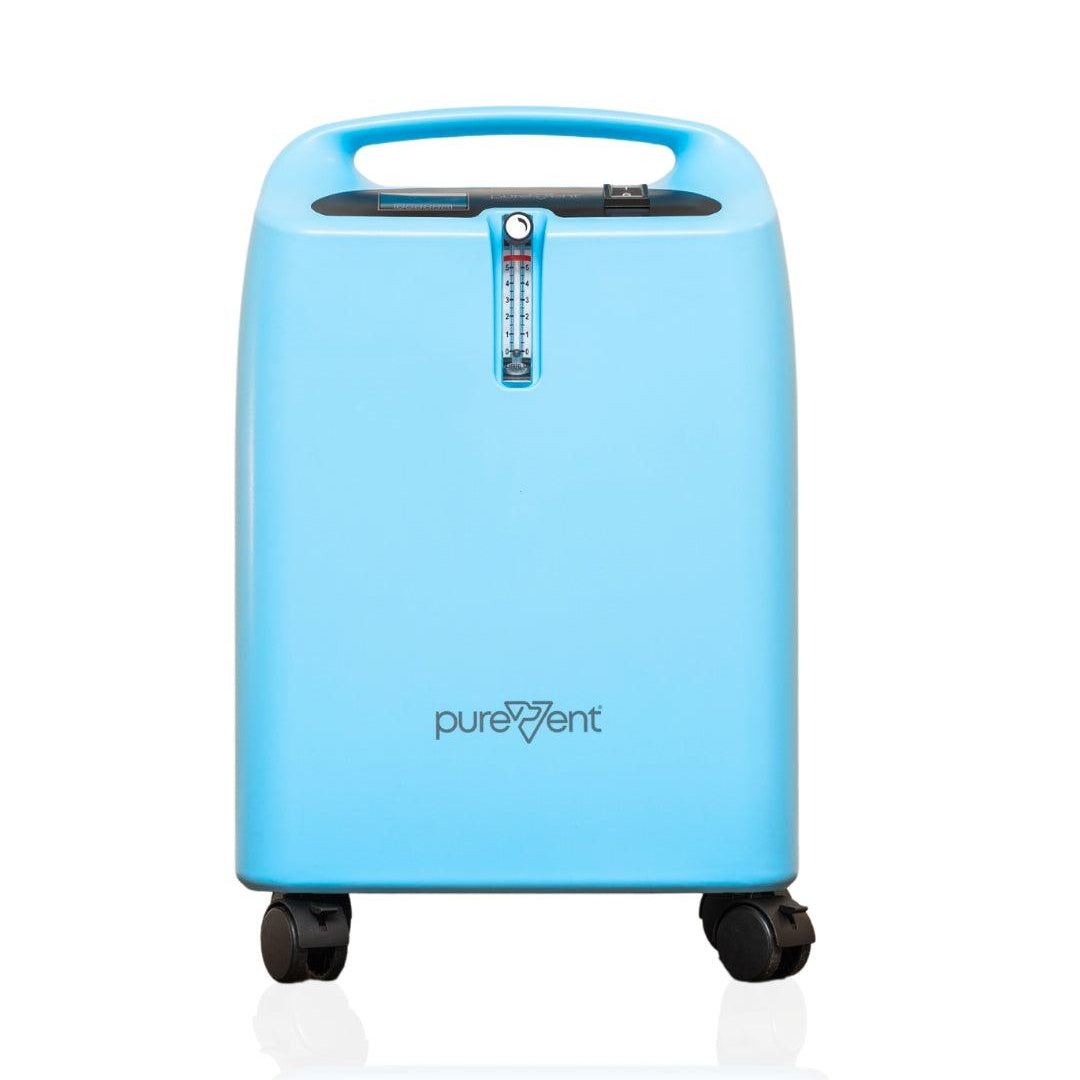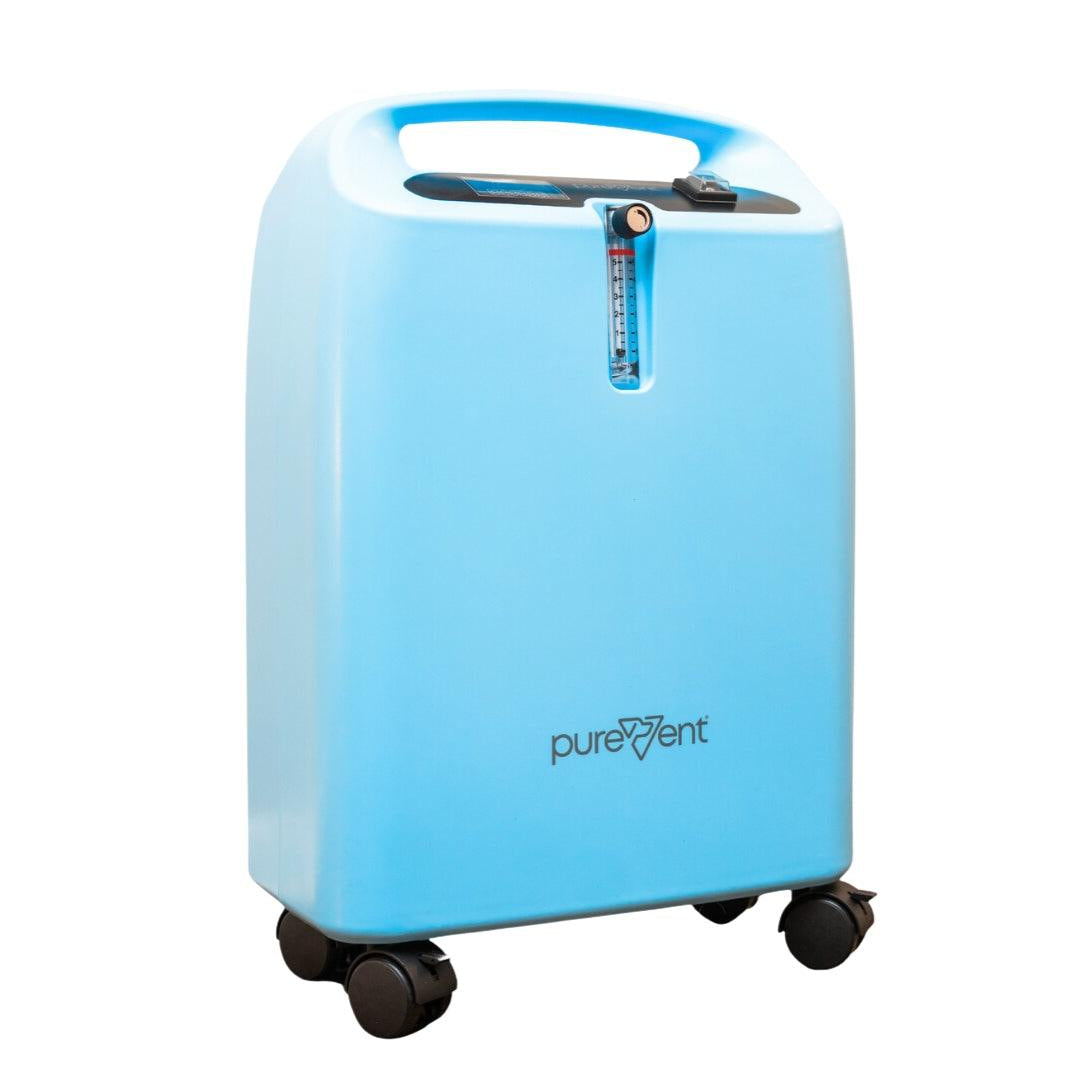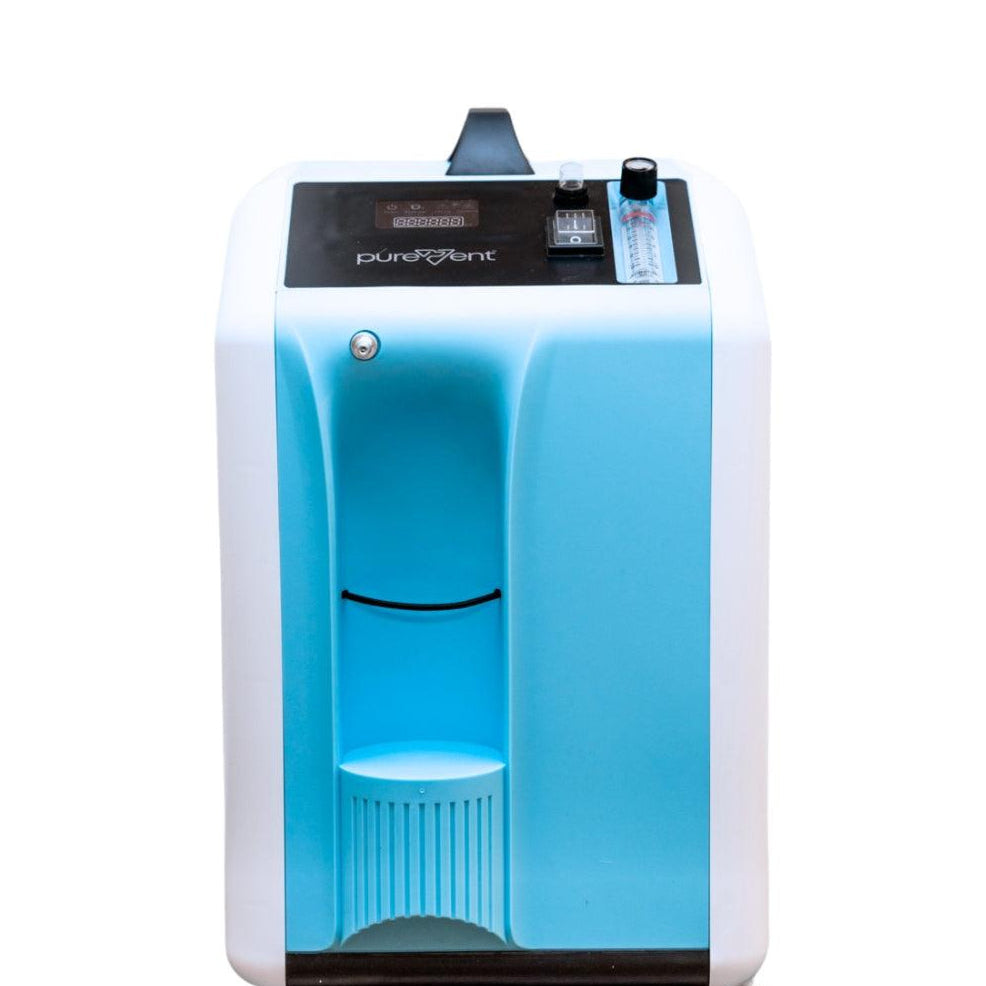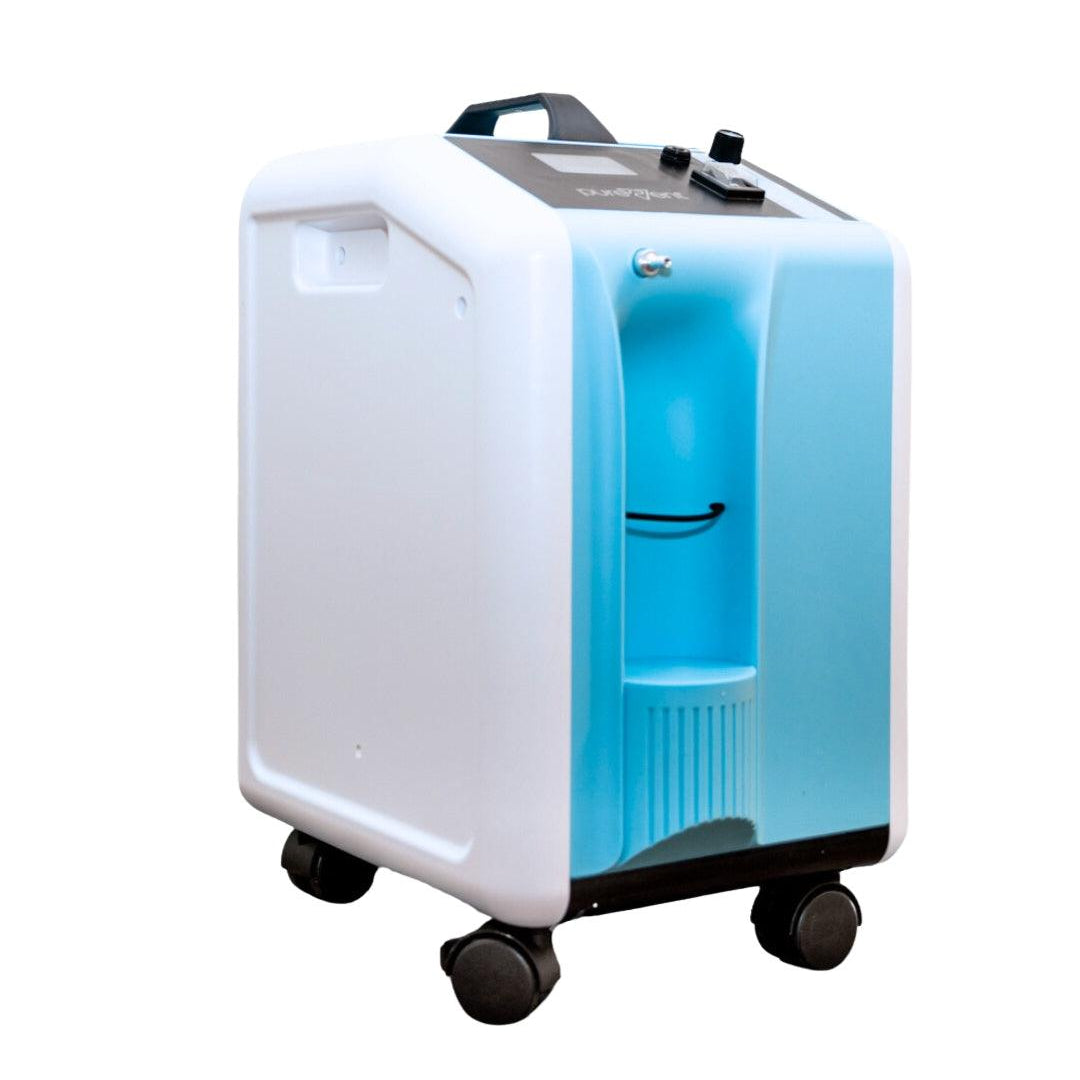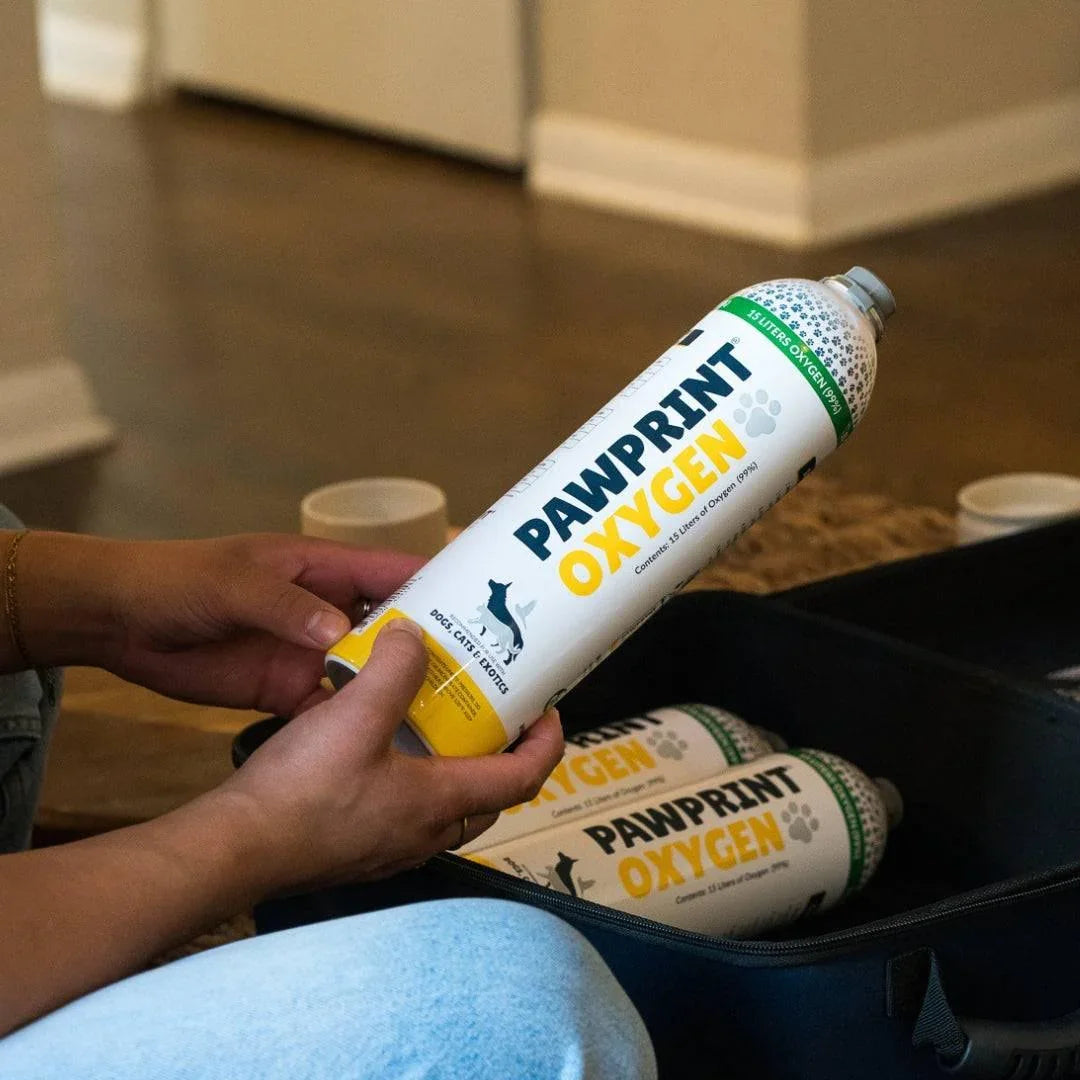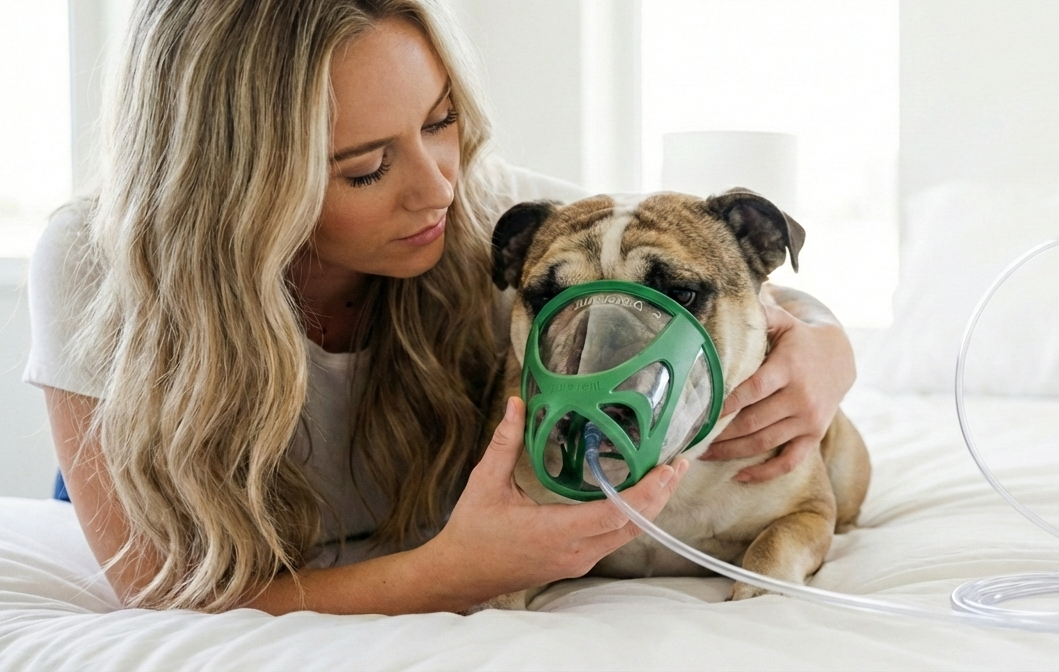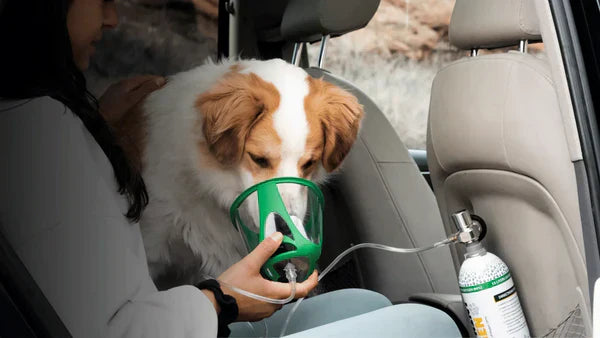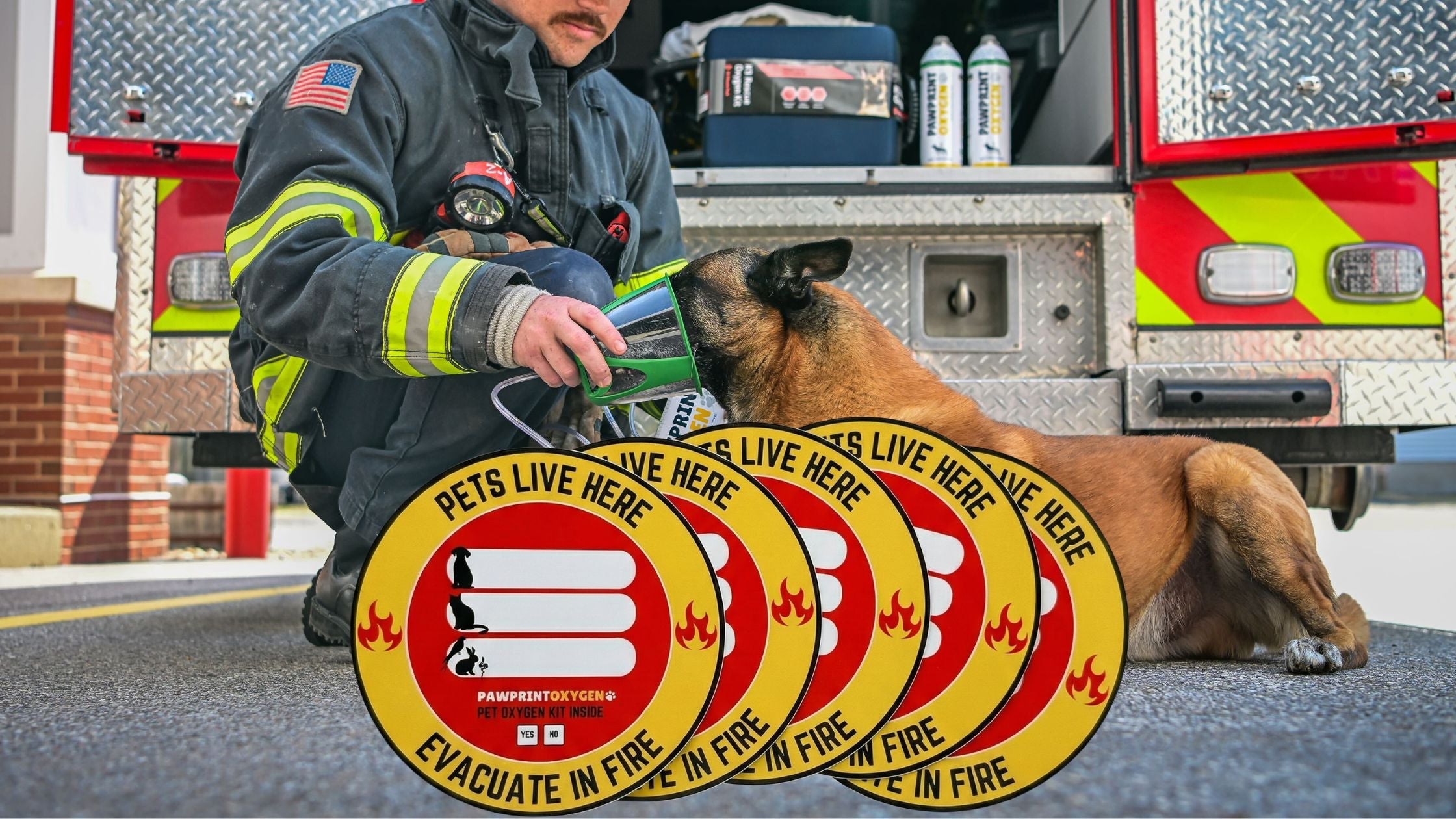Pneumonia in dogs is a serious respiratory condition that can affect any breed or age, leading to significant health challenges if not promptly recognized and treated. Just like in humans, pneumonia in dogs progresses through distinct stages, each with its own set of symptoms and treatment considerations. Understanding these stages is crucial for pet owners and veterinarians alike, as early detection and intervention can greatly improve the chances of a full recovery.
In addition to traditional veterinary care, at-home oxygen therapy is an important component in managing pneumonia, especially for dogs experiencing significant breathing difficulties. Providing supplemental oxygen at home can help stabilize your dog's condition, enhance comfort, and support the healing process as they recover from this serious illness.
In this article, we'll explore the four stages of pneumonia in dogs, providing insights into what each stage entails, how it manifests, and what steps can be taken—including the use of at-home oxygen therapy—to support your dog's health at every phase. Whether you're a concerned pet owner or a fellow veterinary professional, this guide aims to equip you with the knowledge needed to navigate this condition with confidence.
Table of content

Understanding Pneumonia in Dogs
Pneumonia in dogs is an inflammatory condition of the lungs, typically caused by an infection. This infection can stem from a variety of sources, including bacteria, viruses, fungi, or even the accidental inhalation of foreign material, such as food or vomit, leading to what is known as aspiration pneumonia. This condition results in the air sacs within the lungs becoming inflamed and filled with fluid or pus, which hinders the dog's ability to breathe efficiently and get enough oxygen into their bloodstream.
There are several potential causes of pneumonia in dogs and understanding them is crucial for prevention and treatment. Bacterial pneumonia is the most common type, often caused by bacteria such as Bordetella bronchiseptica or Streptococcus zooepidemicus. Viral pneumonia can result from infections like canine influenza or distemper, while fungal pneumonia may occur due to inhalation of spores from fungi such as Blastomyces or Histoplasma. Aspiration pneumonia, on the other hand, usually happens when a dog vomits and inhales the contents into their lungs, leading to an inflammatory response.
Common Symptoms Associated with Pneumonia in Dogs
Recognizing the symptoms of pneumonia early can make a significant difference in the outcome for your dog. Common signs include:
-
Coughing:
This is often persistent and may be accompanied by mucus or phlegm.
-
Difficulty Breathing:
You might notice your dog struggling to breathe, with rapid or labored breaths, and possibly wheezing.
-
Nasal Discharge:
Mucus or pus may be seen coming from the nose, often a sign of an underlying infection.
-
Fever:
An elevated body temperature is a common response to infection.
-
Lethargy:
Dogs with pneumonia often appear unusually tired or inactive, showing less interest in activities they usually enjoy.
-
Loss of Appetite:
A decreased desire to eat can be an early warning sign of illness.
-
Bluish Gums or Tongue:
In severe cases, the lack of oxygen can cause a bluish tint to the gums or tongue, indicating an urgent need for medical attention.
Importance of Early Diagnosis and Treatment of Pneumonia in Dogs
Early diagnosis and treatment of pneumonia are vital to preventing severe complications and ensuring a full recovery for your dog. Pneumonia can quickly escalate, leading to more serious respiratory issues, sepsis, or even death if not treated promptly. Veterinary intervention typically includes diagnostic tests such as X-rays, blood work, and possibly a bronchoscopy to determine the extent of the infection and the most effective treatment plan.
Treatment usually involves antibiotics or antifungal medications, depending on the underlying cause, as well as supportive care like oxygen therapy, fluids, and rest. The earlier pneumonia is detected, the more effective the treatment will be, reducing the risk of long-term damage to the lungs and other organs.
Being vigilant about your dog's respiratory health and seeking veterinary care at the first signs of trouble can make all the difference in managing pneumonia and ensuring your pet returns to full health.
The 4 Stages of Pneumonia in Dogs
Understanding the progression of pneumonia in dogs is essential for timely intervention and effective treatment. Pneumonia doesn’t develop overnight; it advances through distinct stages, each with its own set of symptoms and challenges. Recognizing these stages can help you identify the severity of the condition and take the necessary steps to support your dog’s recovery. In this section, we’ll explore the four stages of pneumonia in dogs, providing insights into how the disease develops and what you can do at each stage to ensure the best possible outcome for your pet.
Stage 1: Initial Infection
The first stage of pneumonia in dogs begins with the initial infection, where the pathogen responsible for the illness takes hold in the respiratory system. This infection can be caused by various agents, including bacteria, viruses, fungi, or the accidental inhalation of foreign material leading to aspiration pneumonia. During this stage, the pathogen begins to multiply, leading to inflammation in the lungs and airways.
At this point, the symptoms may be subtle and easily overlooked. You might notice mild coughing, occasional nasal discharge, or a slight decrease in your dog's activity level. These early signs are often mistaken for a mild cold or allergic reaction, but they can quickly escalate if not addressed.
Early veterinary intervention at this stage is crucial. Identifying and treating the infection before it progresses can significantly reduce the severity of the disease and prevent complications. Your veterinarian may recommend a course of antibiotics or antifungal medication, depending on the cause, along with supportive care to help your dog recover.
Stage 2: Consolidation
If the infection is not caught and treated in the initial stage, it progresses to the consolidation stage, where the pathogen spreads deeper into the lung tissue. During this phase, the inflammation becomes more severe, and the alveoli (the tiny air sacs in the lungs) starts to fill with fluid, pus, and cellular debris. This impairs the lungs' ability to exchange oxygen, leading to more pronounced respiratory symptoms.
Common symptoms at this stage include a persistent, productive cough, increased difficulty breathing, rapid breathing, and possibly a fever. Your dog may also become lethargic, lose their appetite, and show signs of discomfort when breathing.
To diagnose pneumonia at this stage, your veterinarian will likely perform a series of diagnostic tests, such as chest X-rays to visualize the extent of the lung involvement, blood tests to assess the overall health and infection levels, and possibly a tracheal wash to identify the specific pathogen responsible.
Treatment during the consolidation stage typically involves more aggressive medical intervention. This may include stronger or longer courses of antibiotics or antifungals, along with supplemental oxygen if your dog is struggling to breathe. Hospitalization might be necessary for close monitoring and intensive care, depending on the severity of the symptoms.
Stage 3: Resolution
As your dog's immune system begins to fight off the infection, the pneumonia enters the resolution stage. This is when the body starts to clear the infection from the lungs, and the inflammation gradually subsides. The fluid and debris in the alveoli are absorbed or expelled, allowing the lungs to begin healing.
During this stage, you may notice a reduction in symptoms. Your dog might cough less frequently, breathe more easily, and start to regain energy and appetite. However, ongoing treatment and supportive care are still necessary to ensure the infection is fully resolved.
Your veterinarian will likely continue to monitor your dog closely during this phase, adjusting medications as needed and providing supportive care such as fluids, rest, and nutritional support. Preventing a relapse is key, so it's important to follow your veterinarian's instructions carefully and complete the entire course of prescribed medications.
Stage 4: Recovery
The final stage of pneumonia is recovery, where the infection is fully resolved, and your dog is on the path to regaining full health. At this stage, the lungs should be free of infection and inflammation, and your dog's breathing should return to normal.
To ensure complete recovery, follow-up appointments with your veterinarian are essential. These visits allow the veterinarian to assess your dog's lung function, ensure that the infection has been entirely cleared, and address any lingering effects. Continuing any prescribed medications until the course is complete is critical, even if your dog appears to have fully recovered.
Rehabilitation may also be part of the recovery process, especially if your dog has experienced significant respiratory distress. Gentle exercise, a balanced diet, and maintaining a stress-free environment can help strengthen your dog's immune system and prevent future respiratory issues.
Long-term care and monitoring are also important to ensure that your dog remains healthy. Regular check-ups and being vigilant for any signs of respiratory distress can help catch any potential issues early before they develop into more serious conditions.
Complications and Prevention: Navigating Pneumonia in Dogs
Pneumonia in dogs is a serious condition that, if left untreated or improperly managed, can lead to severe and sometimes life-threatening complications. One of the most significant risks is the development of chronic respiratory issues. The inflammation and damage caused by pneumonia can result in scarring of the lung tissue, known as pulmonary fibrosis , which can lead to long-term breathing difficulties and reduced lung function. Dogs with chronic respiratory issues may experience ongoing cough, exercise intolerance, and susceptibility to future respiratory infections.
Another potential complication is the development of secondary infections. Pneumonia weakens the immune system, making it easier for other pathogens to invade the body. These secondary infections can occur in the lungs or other parts of the body, compounding the severity of the disease and making recovery more difficult. In severe cases, untreated pneumonia can lead to sepsis , a life-threatening condition where the infection spreads throughout the body, overwhelming the immune system and causing organ failure.
Early and aggressive treatment is crucial to avoid these complications. If you notice any signs of respiratory distress or prolonged illness in your dog, seeking veterinary care immediately can make a significant difference in the outcome.
High-Risk Groups
Certain groups of dogs are more susceptible to developing pneumonia and may face greater challenges during recovery. Understanding these high-risk groups can help you take proactive steps to protect your pet.
- Puppies: Young dogs have underdeveloped immune systems, making them more vulnerable to infections, including pneumonia. Their small airways are also more easily obstructed by inflammation and mucus, which can exacerbate respiratory symptoms.
- Senior Dogs: Older dogs often have weakened immune systems and may suffer from age-related conditions that make them more prone to respiratory illnesses. Their bodies may also be slower to respond to treatment, requiring more intensive care and a longer recovery period.
- Dogs with Pre-Existing Conditions: Dogs with underlying health issues, such as chronic bronchitis, heart disease, or diabetes, are at a higher risk of developing pneumonia. These conditions can compromise the dog’s immune system or respiratory function, making it more difficult for them to fight off infections.
-
**Brachycephalic Breeds :** Breeds with short noses and flat faces, such as Bulldogs, Pugs, and Shih Tzus, are prone to respiratory problems due to their anatomy. They may be more susceptible to pneumonia and other respiratory conditions, especially if they experience airway obstructions.
For dogs in these high-risk groups, it’s essential to monitor their health closely and seek veterinary advice at the first sign of illness.
Preventative Measures to Avoid Pneumonia in Dogs
Preventing pneumonia in dogs involves a combination of proactive care, environmental management, and awareness of risk factors. While not all cases of pneumonia can be prevented, taking the following steps can significantly reduce the risk:
-
Vaccination:
Ensure your dog is up to date on all recommended vaccinations, especially those for respiratory diseases like canine influenza, distemper, and Bordetella (kennel cough). These vaccines can help protect your dog from the pathogens that commonly cause pneumonia.
-
Good Hygiene:
Maintain a clean living environment for your dog, including regular washing of bedding, toys, and food bowls. This reduces the chances of bacterial or fungal infections taking hold.
-
Proper Nutrition:
Feed your dog a balanced diet to support their immune system. A strong immune system is better equipped to fend off infections, including those that could lead to pneumonia.
-
Avoiding Exposure to Sick Animals: Keep your dog away from other animals that are showing signs of respiratory illness. This is especially important in multi-pet households, boarding facilities, and during outings to places where dogs congregate, like dog parks.
-
Environmental Control:
For dogs prone to aspiration pneumonia, such as those with a history of vomiting or regurgitation, feeding smaller, more frequent meals and avoiding feeding right before exercise can help reduce the risk. In brachycephalic breeds, maintaining a cool, stress-free environment can help prevent breathing difficulties that could lead to pneumonia.
-
Regular Veterinary Check-ups:
Routine check-ups can help detect early signs of respiratory problems, allowing for prompt intervention before pneumonia develops. Your veterinarian can also provide guidance on specific preventive measures tailored to your dog’s individual needs.
By understanding the risks and taking these preventative steps, you can help protect your dog from pneumonia and ensure they lead a healthy, happy life.
PureVent 5L Medical-Grade Oxygen Concentrator
The oxygen concentrator plugs into a wall outlet (120V) and concentrates oxygen from room air, providing high purity oxygen gas (>90%). The oxygen concentrator provides an endless supply of continuous flow oxygen therapy and is recommended for pets requiring extended oxygen therapy (more than one hour per day). Use the oxygen concentrator with a PureVent Pet Oxygen Mask or an oxygen chamber.
When to See a Veterinarian: Recognizing and Responding to Pneumonia in Dogs
When it comes to pneumonia in dogs, timing is everything. Recognizing the early warning signs and knowing when to seek veterinary care can make a significant difference in your dog’s recovery. In this section, we’ll explore the key symptoms that require immediate attention, the importance of routine check-ups for early detection, and how prompt intervention can prevent severe complications and lead to better outcomes.
At-Home Oxygen Therapy for Dogs with Pneumonia
For dogs diagnosed with pneumonia, breathing difficulties are a significant concern at any stage. While hospitalization and professional veterinary care are often necessary for severe cases, at-home oxygen therapy can be an essential part of managing less critical cases or aiding recovery after a hospital stay.
Oxygen therapy is crucial for dogs with pneumonia because the infection can severely impair their lungs' ability to deliver oxygen to the bloodstream. By supplementing oxygen, you can help reduce the strain on your dog’s respiratory system, improve oxygen saturation, and enhance their overall comfort during recovery.
In a home setting, oxygen therapy is typically delivered via an oxygen concentrator or a portable oxygen tank. Devices like those from Pawprint Oxygen are designed for easy use at home, offering solutions like oxygen chambers or masks that are safe and effective for pets.

When Is At-Home Oxygen Therapy Appropriate?
Your veterinarian may recommend at-home oxygen therapy if your dog is stable enough to be treated outside of a hospital but still requires respiratory support. It's particularly beneficial for dogs showing moderate symptoms such as labored breathing or fatigue, but who are otherwise stable and responding to treatment.
At-home oxygen therapy may also be advised as a follow-up to hospital-based care, helping your dog transition from intensive treatment to full recovery.
How Do Veterinarians Diagnose Your Dog with Pneumonia?
Veterinarians will perform a physical exam and use a combination of diagnostic tests to diagnose your dog with pneumonia. X-rays, bloodwork, and cultures are some common diagnostic tests veterinarians may utilize.
What Kinds of Dogs Get Pneumonia?
Pneumonia can affect all breeds and ages of dog.
How Do Dogs Get Pneumonia?
There are several causes of pneumonia, from bacterial, viral, or fungal to inhaling particles (called aspiration pneumonia). Treatments may differ between the different kinds of pneumonia, so veterinarians will work to try to pinpoint the cause before starting medications for your dog with pneumonia.
How to Administer Oxygen Therapy at Home
Administering oxygen at home involves setting up the equipment according to your veterinarian’s instructions. Here are some general steps:
- Set Up the Oxygen Source: If using an oxygen concentrator, ensure it is placed in a calm, quiet area of your home so that treatment can be provided to your dog in a positive, calming manner. If using a portable oxygen tank, make sure to be familiar with operating it, and is placed somewhere that is easily accessible in case of an emergency.
- Prepare the Delivery System: Depending on your dog’s needs, you may use an oxygen mask, nasal cannula, or oxygen chamber. Ensure the mask fits snugly over your dog’s nose and mouth, or that the nasal cannula is comfortably inserted.
- Monitor Your Dog: Keep a close eye on your dog while administering oxygen. Monitor their breathing, comfort level, and any changes in symptoms. It’s crucial to follow the dosage and duration recommended by your veterinarian.
- Keep the Environment Calm: Stress can exacerbate breathing difficulties, so ensure that your dog is in a calm, quiet environment during oxygen therapy. Gentle reassurance and minimizing external stressors can help them relax and breathe more easily.
The Benefits of At-Home Oxygen Therapy
Providing oxygen therapy at home allows for a more comfortable recovery environment and can reduce the stress associated with frequent trips to the vet. It also gives pet owners a sense of control and involvement in their dog's recovery process, which can be particularly reassuring during a stressful time.
By closely following your veterinarian's guidance and maintaining a calm, supportive environment, at-home oxygen therapy can significantly improve your dog’s quality of life and support a faster recovery from pneumonia.
